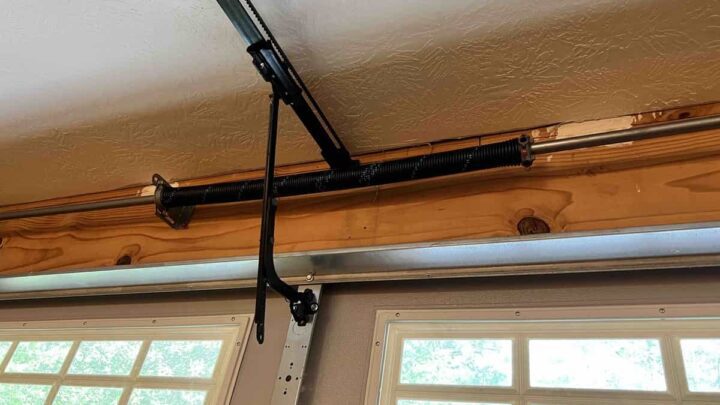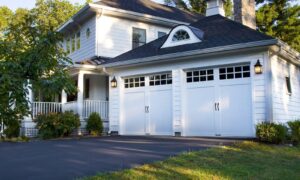A garage door spring mechanism keeps your door up and running. Whether you’re using a door opener or manual operation, these springs ensure your door will open or close seamlessly. Due to its crucial role in your garage door’s operation, it’s important to understand how it works and what to do when it fails.
In this post, we’ll take a quick look at the science behind garage door springs. We’ll also discuss the signs of damage and the right approach to fixing broken garage door springs on your property.
How garage door springs work
Your garage door uses two types of springs: extension and torsion. If one of these fails, your garage door will start malfunctioning.
To further understand how these components work, let’s compare torsion vs extension springs:
Extension springs
These are installed at each end and side of your garage door. It’s connected to pulleys that run along your garage walls, which are then attached to cables.
Overall, extension springs are an old technology. Also, it’s not a popular option since it can snap dangerously when broken since it’s stretched when the door is closed.
Usually, extension springs come in three types: open-looped, double-looped, and clipped ends. The last one is the most durable, though a bit pricey.
By understanding garage door spring mechanics like this, you can decide which suits your property best. But keep in mind that the average lifespan of garage door springs of this type is around 1 to 3 years, five if maintained or not used too frequently.
Torsion springs
Of the two types of garage door springs, the torsion type is the most widely used among homeowners. It’s mounted above your garage door and wound to a specific level of tension.
Unlike extension springs that use counterbalancing on the door’s weight, torsion springs create torque on a shaft to create this effect.
Like extension springs, torsion springs come in different types, such as standard, early set, steel rolling, and torque master. Of all these options, the torque master torsion spring is the safest since it’s enclosed in a shaft.
As for the garage door spring lifespan, torsion springs last an average of 7 to 12 years.
Signs of garage door spring failure
Since your door’s springs take the beating of regular use, it will soon sustain damage. Ultimately, it will fail and require immediate garage door repair in LA.
Here are signs that you need to call for professional garage door spring services:
- Your door appears misaligned, meaning your springs are no longer in the best shape to support the door’s weight.
- The door closes abruptly, a tell-tale sign of a broken spring.
- Your door looks off-track or crooked despite the rollers and tracks being in good condition.
- There’s visible damage on the springs, such as gaps on the coil or dangling cables attached to the springs.
- Your garage door feels heavier when opening since the springs are no longer counterbalancing its weight correctly.
- You heard a loud snapping noise before your garage door started malfunctioning, a sign of a broken spring.
- Your door only opens at six inches.
- The springs have severe rusting and may break time.
Depending on the severity of the damage, repairs may be done. However, the technician may also recommend a new garage door spring replace the old one.
Whatever the solution is, you should call for a professional garage door spring installation service. It’s because DIY garage door spring replacement can cause injuries and damage to property if not done correctly.
Cost of replacing garage door springs
The garage door spring replacement cost usually ranges from $10 to $60 for an extension spring. But for torsion springs, the replacement parts will set you back by about $30 to $250 or more, depending on what needs to be fixed.
Aside from that, you must factor in the cost of professional garage door repair in Los Angeles. Feel free to call a contractor near you to get a free estimate.
Why garage door springs get damaged
Are you getting garage door spring replacements often? While this component will require replacements at some point, premature damage may occur for some reasons. Here are some of it:
- Regular wear and tear due to more frequent use.
- High humidity levels can lead to severe rusting and eventual breakage.
- Improper installation causes the spring to sustain wear and tear faster.
- The spring isn’t compatible with your door’s weight, putting more strain on it than usual, leading to damage.
- Poor quality springs that aren’t made to last
Conclusion
Whatever the reason is, you should consider calling local garage door repair services in LA whenever you encounter this problem. This way, your door springs will be replaced and its functionality restored.
Remember that knowing how to replace garage door springs is more than just purchasing the replacement. You also need the right tools and techniques to do the repairs safely.



































